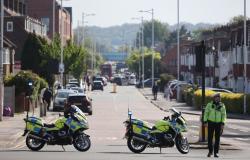The general rule is that rising traffic has priority. The underlying idea is that ascending traffic is more difficult to get moving again after coming to a standstill than descending traffic. If it is easier to avoid rising traffic in a certain situation, it is best to take advantage of that opportunity.
Austria has been in the top 10 of popular holiday destinations for Dutch people for years. On the way there you will most likely cross German territory. There is a good chance that you will have to brave mountain roads in both countries.
On narrow roads where two vehicles cannot pass each other properly, no explicitly imposed priority rules apply in Germany and Austria. However, the person who can most easily swerve or drive back must give priority. In principle, lighter vehicles must give way to heavier vehicles, such as buses or trucks.
In Switzerland, France and Italy, the rule is that vehicles driving uphill have priority, provided that they are comparable vehicles and that the situation allows this priority rule. Buses and coaches generally have priority.
In Switzerland, traffic in only one direction is allowed on some mountain roads and during certain hours. Those hours are indicated at both ends of the road. On so-called mountain post roads, indicated by a post horn, postal trucks have priority.
Six (practical) tips for a ride on mountain roads
• Driving in the mountains requires an adapted driving style. You prefer to choose a higher speed than on flat roads, because this way you avoid an overheated engine. The exact speed depends on your engine and load.
• When you press the accelerator, the car must still be able to accelerate. Is that not the case or does the car even slow down? Then you have to switch back.
• Brake the engine as much as possible to prevent your brakes from overheating.
• Never drive downhill in neutral, you are then an unrestrained projectile and that is dangerous. Moreover, your engine uses fuel in idle mode and not when you release the gas in the gears.
• It’s a mistake many drivers make spasmodic pressing of the clutch.
• Are you standing on a slope in a traffic jam? Then try to limit switching. Feel free to create a slightly greater distance with the vehicle in front, so that you can continue driving when the traffic starts moving.
• Do you drive an automatic? Then choose manual operation, both uphill and downhill, and switch back in time. That’s why you can also use engine braking when descending. If you have an automatic transmission with the option of 1, 2 or 3, use one of these gears to apply engine braking when going downhill.






